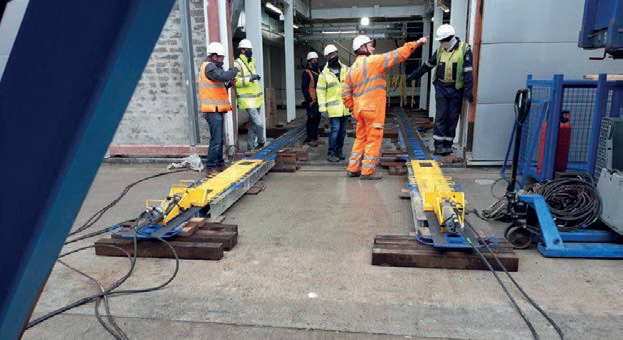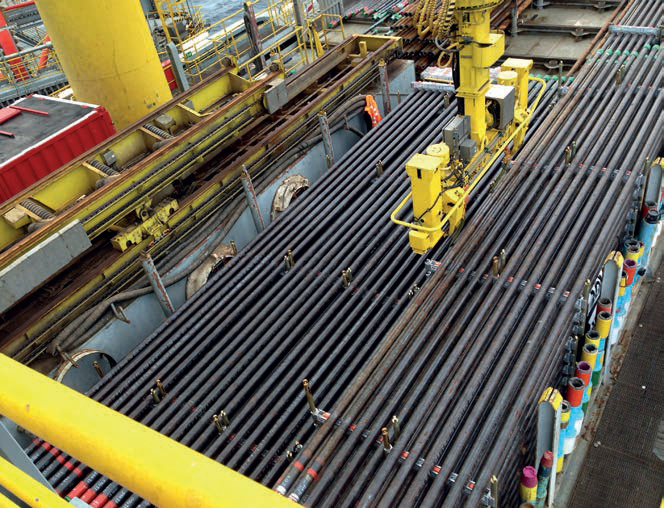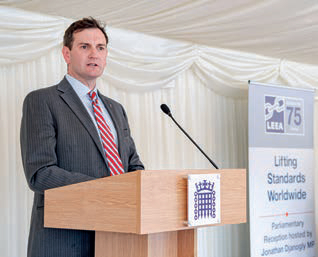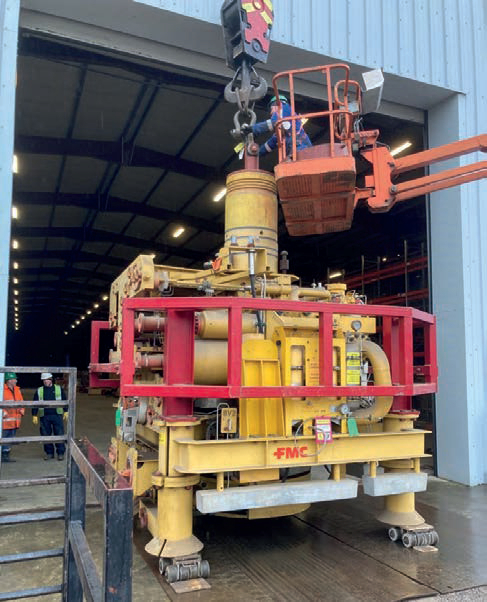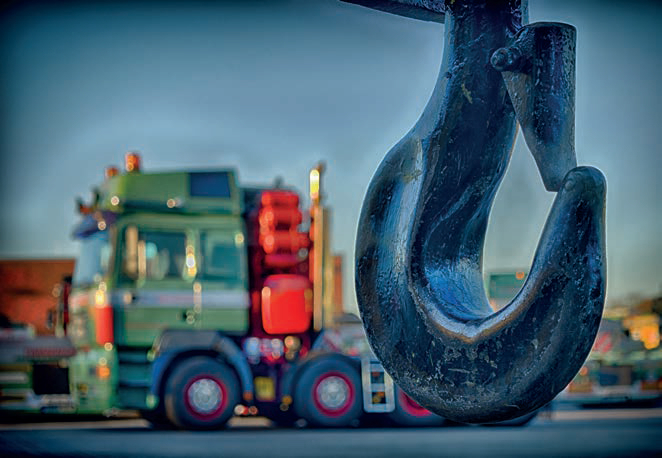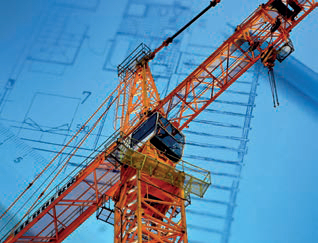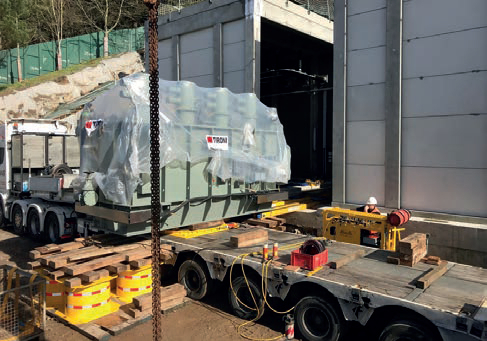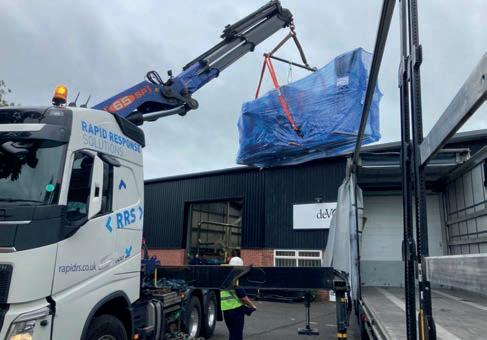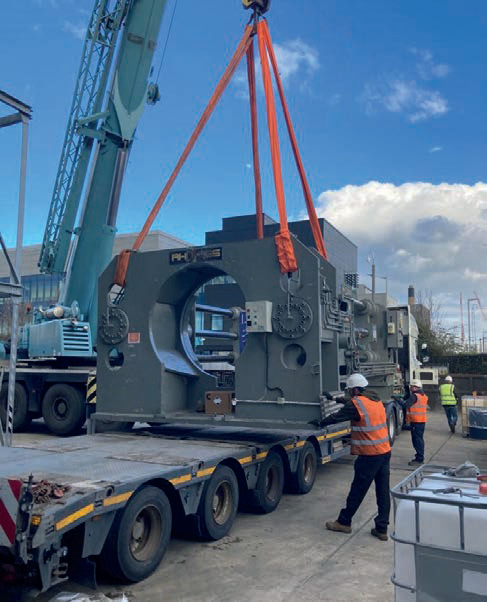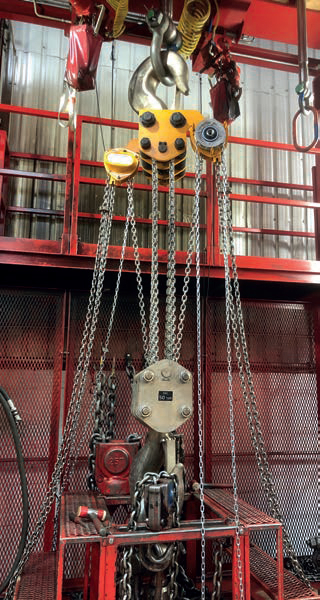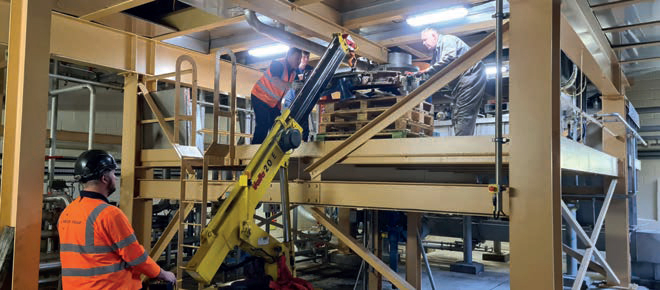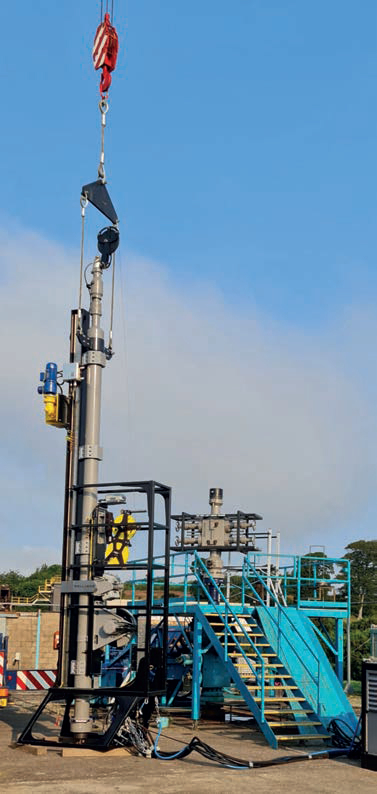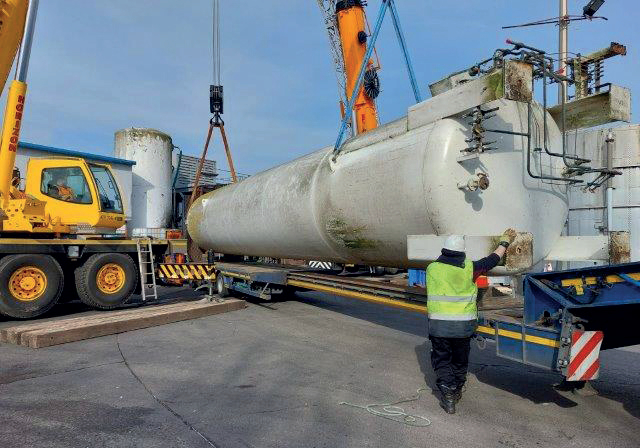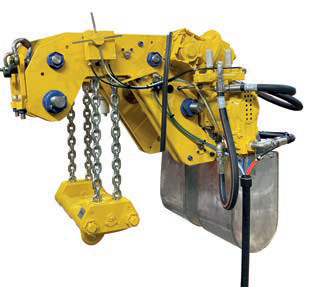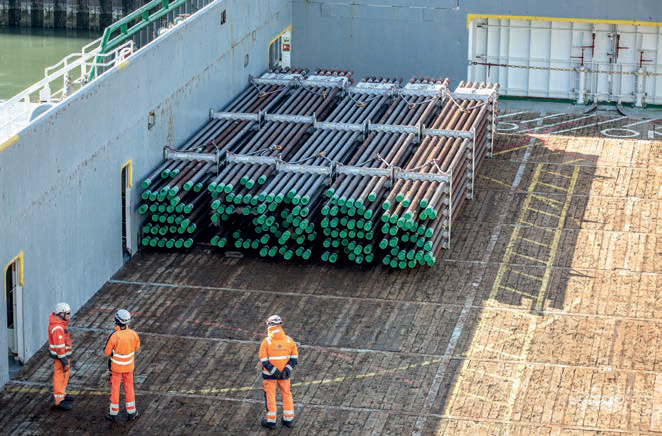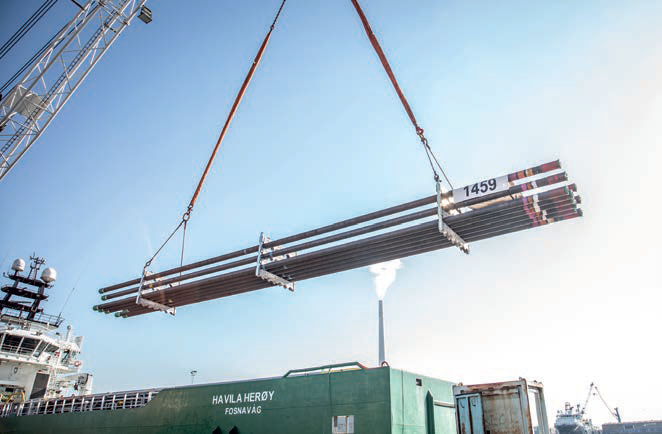Raising productivity
31 October 2022LiftEx 2022 is back, hosted by LEEA in Aberdeen, October 5-6, 2022. Now in its 17th year, the event will feature 100 exhibitors, over two days, as well as the LEEA Awards and now the biggest ever Lifting Industry careers event.
The UK holds great potential for adopting advanced solutions that boost the productivity of industrial and urban processes, and alongside its European counterparts is anticipated to nurture the growth of automated overhead cranes, reports Market Insights.
As well as automobiles, rail, marine, chemical processing, aerospace equipment, machinery, food, pharmaceutical goods, and electronics the industry is seeing increased development of automated shipbuilding cranes and rising automation in the manufacturing sector.
The European automated overhead crane market is expected to grow from $515.08m in 2021 to $827.71m by 2028; it is estimated to grow at a CAGR of 7.0% from 2021 to 2028. Escalating adoption of industry 4.0 for smarter lifting equipment is expected to fuel this growth.
The manufacturers of overhead cranes are focusing on designing smarter lifting equipment by following the trends to develop smarter factories in high-end manufacturing industries.
The implementation of automation, smart technology, digital communications, smart factories, the Internet of Things (IoT), networks, and cloud-based storage are some of the features offered with the adoption of Industry 4.0 as a part of the fourth industrial revolution.
“Lifting is a ubiquitous and essential function in many end user supply chains, all of which would come to a halt without a bewildering variety of cranes, hoists, platforms, cradles and their associated chains, ropes, slings and other lifting equipment – not forgetting services such as inspection, maintenance and training,” says Ross Moloney, CEO, LEEA (the Lifting Equipment Engineers Association).
“It has a role to play in ensuring the productivity of so many sectors that are going through their own developments during unprecedented times. The oil and gas industry is currently in the spotlight surrounding the fuel and energy crisis as demand increases to keep the energy flowing. Supporting this, is the expanding offshore wind energy sector, which adds harsh environments into the equation, compounding maintenance costs in a sector where uptime is already a priority to maintain energy generation. Throughout the utilities sector, lifting equipment is deployed in field operations as well as for infrastructure installation and repairs to treatment centres, energy generation plants, specialised nuclear facilities and the rapidly growing renewables sector.
“Lifting is on the up in other sectors such as construction, where investment and urbanisation consistently drives new projects. Across maritime and port operations, lifting reliability leading to minimised downtime is the key to efficient loading and unloading. Throughout the world of logistics, lifting keeps supply chains flowing through ports and railheads. Inside warehouses, stacker cranes travel through automated storage and retrieval systems. The use of materials handling equipment is growing in manufacturing and warehousing to help reduce musculo-skeletal and repetitive strain injuries.
“The automotive sector is going through a significant transition towards electric vehicles. Driven by Just In Time assembly, their production lines must keep running, making dependability of any lifting equipment or supporting services vital. Without lifting in the entertainment sector, theatre, television and film sets will not be moved, lighting rigs for live concerts will remain on the stage instead of above it.”
He adds, those responsible for procuring lifting equipment and services in any of these markets must be made aware of how to source excellence. They should also fully understand the relevant risks, consequences and legal obligations. T
“They must strive towards best – rather than merely good – practice. The industry is constantly evolving with the onset of new materials, innovative ideas, better ways of doing things, and the inclusion of modern technologies adds to the portfolio of solutions that will improve productiveness and efficiency while ensuring safety.”
LiftEx 2022 the flagship event of LEEA is the first major opportunity in three years to meet face-to-face with the lifting equipment industry. Rapid Response Solutions (RRS), founded by Paul Barber in 2000, is the main sponsor and is organising an open day on October 4 at its Aberdeen office and projects depot where it will be demonstrating the Hydra-Slide skidding system and its machinery moving, transport and storage services.
The company has decades of knowledge in the sector from lifting and moving the largest transformers for the main utilities companies and heavy presses for the automotive industry to managing complete factory and machinery moves for lighter and sensitive processing equipment.
“Strengthening and positioning ourselves in the market of heavy and complex lifting techniques is the fact that RRS Group is the sole agent for Hydra-Slide in the UK and Europe, which designs low profile, hydraulic skidding systems, used in many situations such as transformer moves, boiler moves in plant rooms, paper mill process plant, power and energy sector projects, oil, gas and sub-sea manufacturing machinery and even in food and beverage machinery installation where access and height are restricted,” says Claire Mellows, group business development director, RRS.
“Hydra-Slide is represented by the RRS Group and their key contacts at Hydra- Slide, headed by their CEO Janine Smith. The Hydra-Slide system is designed around the user and the requirement to offer function and convenience whether for confined space or just a much safer method than traditional load-moving equipment saving time, risk and money. RRS Group offers hire of, sales of or training on this incredibly versatile skidding system which we’ve been using ourselves for many years on many successful projects.”
Dynamic Load Monitoring (DLM) based in Southampton, UK, also exhibiting at LiftEx, is a specialist in the design, manufacture, repair, and calibration of load cells, load monitoring, and cable working equipment for the offshore, renewable energy, marine, subsea, and lifting and rigging industries.
It recently customised wireless load pins for installation in winches supplied by Atlas Winch & Hoist Services (Southern) for cable pulling applications in the construction of offshore wind turbines.
It supplied load pins for installation by Atlas in various capacity capstans, which work in tandem with hydraulic power units (HPUs). The “load pin winches” are typically purchased by Atlas’s clients for long-term use. “Atlas uses our load pins in their winches for this important end-use application, but we have collaborated on several projects over the years, and we also manufacture force measurement solutions for other projects in this fast-paced industry. We supply the load pins ready-machined; they just need to be installed in the winch mount point,” said Martin Halford, managing director, DLM.
When constructed, the power generated by a turbine is transmitted to an offshore substation before then going to the mainland. This requires miles of subsea cabling, and the final stage of pulling cables into the foundation of each turbine or to the substation is completed by special winching equipment and, here, a load monitoring system is provided via the load pins.
According to Anton Lavery, MD, Atlas, the final section of each cable - approx. the last 200m - is pulled from a vessel into the base foundation of a turbine or to the platform of an offshore substation. The electrical cable is high specification and high value, and it is therefore important to monitor the load applied during the pulling process.
“A spike in the load applied might indicate a problem and it is also important the cable installers can demonstrate and prove the cable has not been over-strained during installation. Cables have a maximum load that they can be exposed to and if this is exceeded the cable warranty will be invalidated,” he said.
Historically, Atlas has produced several 6t capacity capstan winches and HPUs, having originally provided them for a client called Cwind in 2014. Last year, it supplied a larger, 9t unit to a client before taking an order for a further eight of the same capacity. Atlas has since designed 11t and 12t capstans, which follow the same design concept, incorporating load pins. The winches and HPUs are produced by its manufacturing partner, Marotechniek, based in The Netherlands.
When Atlas places an order, the load pins are designed by DLM’s engineering team using in-house SolidWorks and other computer-aided design (CAD) modelling software, at which point the client can sign-off on technical drawings.
The pins are then machined from stainless steel using a computer numerical control (CNC) lathe at DLM’s sister company, Vulcan Offshore. Once a load pin returns to DLM, it is ready for the strain gauging process, which is a “very intricate and delicate process,” explains Halford.
Next, DLM builds the TW-3.0 transmitter electronics into the orange telemetry end cap, designed by in-house engineers, and wires it up to the strain gauges. The load pin is then proof loaded, calibrated, and tested prior to goods outward inspection and finally dispatch.
“Each [load pin] is generally different to the next as they are typically custom-designed for the application. The common part is the telemetry end cap, which customers and end users are familiar with on several of our load pin/shackle load cells and running line monitoring products. Every one of our wireless products uses our own proprietary TW-3.0 electronics,” adds Halford.
Global Gravity has partnered with a Middle Eastern offshore drilling operation on its TubeLock TTRS system, reducing its crane lifts by 24,000 lift per year.
TubeLock TTRS consists of a series of patented aluminium frames, that locks the pipes securely in place, eliminating any possibility of the pipes moving about or relocating mid-air, which is a well-known risk with other methods such as slinging and bundling. That feature alone immensely reduces the risk of hand and foot injuries, which is regrettably plentiful on many rigs.
When the client started using the TubeLock TTRS system, it was to reduce risk and manual handling offshore. One of the key benefits of using the TubeLock TTRS system is that it enables the rig cranes to lift the tubulars directly from the supply vessel to the position on the cantilever where the tubulars will be run from. Also, no cranes are used for packing in frames or loading to trucks, only forklift.
“The intention was originally to reduce the amount of manual handling and crane lifts offshore. Since adapting the TubeLock frames on all rigs we see several more advantages,” said the drilling superintendent for the client.
“To put it all into perspective; in a “standard” well we used to prepare 300 bundles of tubulars. Now we only pack and prepare 115 set of TubeLock frames. The aim was to reduce risk and manual handling offshore. Now we have reduced the unbundling of tubulars by almost 2,400 per rig per year. Internal crane lifts at rig site proven to have reduced even much more than that.”
The reduction in crane lifts as well as cargo handling time naturally have a positive impact on CO2 emissions as well as financially with the reduction in fuel.
Red Rooster Lifting manufactures air hoists, trolleys and cranes and Red Rooster Lifting load cells as well as other load measuring equipment. Bespoke units are designed and built in-house to meet the stringent requirements using the latest design and manufacturing software, with their processes being accredited to the ISO 9001:2015 standard.
They are also agents for a range of high-quality lifting equipment manufacturers such as EMCE winches, Kito electric hoists, Kito manual hoists, Gebuwin winches & Davits, Teo crane weighers, Kito Van Leusden special hoisting equipment and Kito Erikkila light crane systems.
A recent project involved the manufacture of over 30 hoists and trolleys for a client during Covid. Over 60% of these units had to be modified or completely redesigned to achieve the specification and materials required to meet the corrosion and operating requirements and during manufacture there were challenges with delivery times and costs changing, making planning an ever-moving target. Production was also affected by the pandemic which impacted machining, engineering and painting processes due to reduced staffing levels.
“This project was a big undertaking for the Red Rooster team with the new designs, complicated machining, assembly and testing even in normal times, but with Covid it made the whole project more challenging,” said Bill Aitken MD, Red Rooster Lifting. “The ability of the team to act fast altering designs and deal with changing suppliers or parts, kept the project moving forward to the agreed delivery schedule. This comes from the teams’ knowledge as well as continual training we provide to promote awareness, responsibility and exceptional customer service. Having a large stock of parts and a full repair and testing service gives our clients with the utmost assurance.”
LIFTEX TO HOST BIGGEST EVER LIFTING INDUSTRY CAREERS EVENT
Now in its 17th year, LiftEx 2022 has partnered with TechFest, to promote STEM (Science, Technology, Engineering and Mathematics) subjects, striving to fill the gap between school and industry jobs.
Pupils who are interested in learning more about the lifting industry can come and meet global companies at LiftEx Industry Career Day on October 6, 2022 at the tradeshow.
Currently nearly 130 individuals have already signed up to attend in person.
“Through meeting with industry professionals from LEEA and its members, getting involved in hands-on challenges, mock interviews and other activities, this event will raise awareness among teachers as well as students of the opportunities available in the Lifting Industry and the pathways into it,” said Ross Moloney, CEO, LEEA.
LiftEx Industry Career Day will be split into three parts, starting with a career information, advice and guidance session for students, aged 16-18, and their teachers.
Speakers from the industry and partners from universities and the military will introduce students to learning opportunities and career routes.
Second, LEEA will organise breakout sessions, where member volunteers will support the students in small groups as they introduce them to key parts of the industry. They will also run interview practice sessions, with advice on successful applications and CVs. Updated interactive experiments, which are part of LEEA’s Think Lifting programme, as well as other interactive activities, will be rolled out to introduce the students to core principles used throughout the industry.
Think Lifting is the school engagement programme established by LEEA to inspire and encourage pupils to consider a career in the lifting industry, linking them to local lifting sectors.
The final part of the day will be a guided tour around the LiftEx exhibition hall, visiting the stands of member companies that have signed up to host the students.
